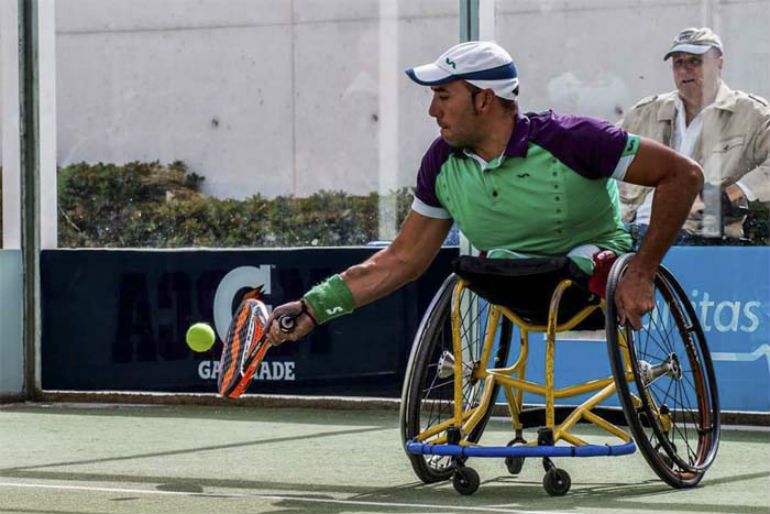Share:
Take it offline!
This Education in Motion resource is also available as a printable PDF.
Download PDF
In just over two years, adapted padel has become a booming sport, highlighted by the creation of clubs, associations and tournaments throughout the country. This new sport, which allows those with physical and mental disabilities to participate in, is played in a wheelchair, uses racquets and a conventional padel ball, and incorporates modifications similar to those of wheelchair tennis, such as the ball being allowed to bounce twice.
Six keys to success when playing adapted padel
The rules of adapted padel are regulated by local and national federations, who develop clubs and associations and organise official competitions, encouraging competitiveness and promoting a healthy lifestyle. Here are some keys to its succes:
Adapted padel requires good physical form and is ideal for keeping fit.
The sport encourages social integration and rehabilitation, which is why it is especially recommended for those recovering from spinal cord injuries due to traffic accidents or similar incidents.
Padel courts are accessible and space is tightly controlled.
Padel is played in standard facilities, reducing feelings of exclusion, with recent modifications to the rules of the game further encouraging inclusion.
Padel is easy to learn
This makes it enjoyable to play and encourages practice towards improvement.
Adapted wheelchairs are available
Padel wheelchairs are fully equipped to meet the sports required safety standards and include anchorage points and attachments.

Adapted padel: regulations and variations
Adapted padel retains the rules regarding points and timings of conventional padel and also the racquet and ball. Almost all of its modifications are linked to the ball being allowed to bounce twice during both the serve and in-game.
These modifications are also maintained in the case of the padel bouncing twice (when the ball, after legally bouncing on the respective side, travels over the back wall of court via the side wall or the door) which, in the case of the adapted padel, means a third bounce.
Other adaptations of wheelchair padel are:
The court must have at least two entrances. Sliding doors are recommended to be able to guarantee a maximum measurement of 0.82 metres during the game. To ensure safety, padel courts should have no steps or inlets in entrances which would make it difficult for wheelchairs to enter.
Players are not allowed to lose contact with their wheelchair, which must be anchored through the use of belts, straps or foot and waist railings. Contact between a player’s foot and floor of the court with the intention of stopping or voluntarily propelling themselves is considered a foul, and is subject to penalisation.
The wheelchair is considered part of the player's body so it cannot be touched either by the ball or by the other player during doubles matches.
Padel players cannot jump, walk or run during the serve, ensuring that they have not changed position, even if small movements of feet are made which do not affect the initial position. Similarly, in adapted padel the serving player cannot change his/her serving position by moving or turning, however it will not be considered a change in position if the wheels of the chair move slightly.
Padel players, when serving, must hit the ball below the waist. In the case of the adapted padel, the player must hit it below the shoulders.
During the padel serve, the serving player cannot touch the serving line with his/her feet, or touch the continuous imaginary centre line. In adapted padel, this rule is applied to the front wheels of the wheelchair, which must be behind the central and serving lines.
If a player has difficulty performing the serve by hand, they can use the racquet to bounce the ball.
If it’s necessary to adjust or repair a wheelchair during the game, time can be stopped for over 20 minutes but the readjustments cannot exceed 10 minutes.
Looking to keep active? Check out Quickie's range of lightweight active wheelchairs, including the Quickie Krypton and Helium, as well as our range of Quickie Attitude handbikes.